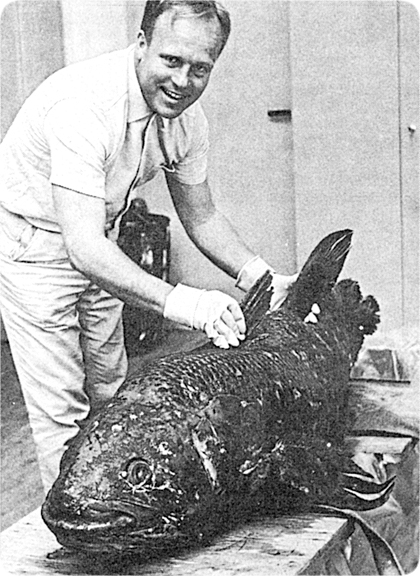Below is the online edition of In the Beginning: Compelling Evidence for Creation and the Flood,
by Dr. Walt Brown. Copyright © Center for Scientific Creation. All rights reserved.
Click here to order the hardbound 8th edition (2008) and other materials.
65. Index Fossils
In the early 1800s, some observers in Western Europe noticed that certain fossils are usually preserved in sedimentary rock layers that, when traced laterally, typically lie above somewhat similar fossils. Decades later, after the theory of evolution was proposed, many concluded that the lower organism must have evolved before the upper organism. These early geologists did not realize that a hydrodynamic mechanism, liquefaction, helped sort organisms in that order during the flood. [For an explanation, see pages 197–214.]
Geologic ages were then associated with each of these “index fossils.” Those ages were extended to other animals and plants buried in the same layer as the index fossil. For example, a coelacanth fossil, an index fossil, dates its layer at 70,000,000 to 400,000,000 years old. [See Figure 30.] Today, geologic formations are almost always dated by their fossil contenta—which, as stated above, assumes evolution. Yet, evolution is supposedly shown by the sequence of fossils. Because this reasoning is circular,b many discoveries, such as living coelacanths,c–g were unexpected. [See "Out-of-Sequence Fossils" on page 13.]

Figure 30: 70,000,000-Year-Old Fish? Thought to have been extinct for 70,000,000 years, the coelacanth (SEE-la-kanth) was first caught in 1938, deep in the Indian Ocean, northwest of Madagascar. Rewards were then offered for coelacanths, so hundreds were caught and sold. In 1998, they were also found off the coast of Indonesia.c How could the ancestors of these coelacanths leave no fossils for 70,000,000 years?
Before coelacanths were caught, evolutionists incorrectly believed that the coelacanth had lungs, a large brain, and four bottom fins about to evolve into legs.d Evolutionists reasoned that the coelacanth, or a similar fish, crawled out of a shallow sea and filled its lungs with air, becoming the first four-legged land animal. Millions of students have been incorrectly taught that this fish was the ancestor of all amphibians, reptiles, dinosaurs, birds, and mammals, including people. (Was your ancestor a fish?)
J. L. B. Smith, a well-known fish expert from South Africa, studied the first two captured coelacanths, nicknamed the coelacanth “Old Fourlegs” and wrote a book by that title in 1956. When dissected, did they have lungs and a large brain? Not at all.e Furthermore, in 1987, a German team filmed six coelacanths in their natural habitat. They were not crawling on all fours.f
Before living coelacanths were found in 1938, evolutionists dated any rock containing a coelacanth fossil as at least 70,000,000 years old. It was an index fossil. Today, evolutionists frequently express amazement that coelacanth fossils look so much like captured coelacanths—despite more than 70,000,000 years of evolution.g If that age is correct, billions of coelacanths would have lived and died. Some should have been fossilized in younger rock and should be displayed in museums. Their absence implies that coelacanths have not lived for 70,000,000 years.